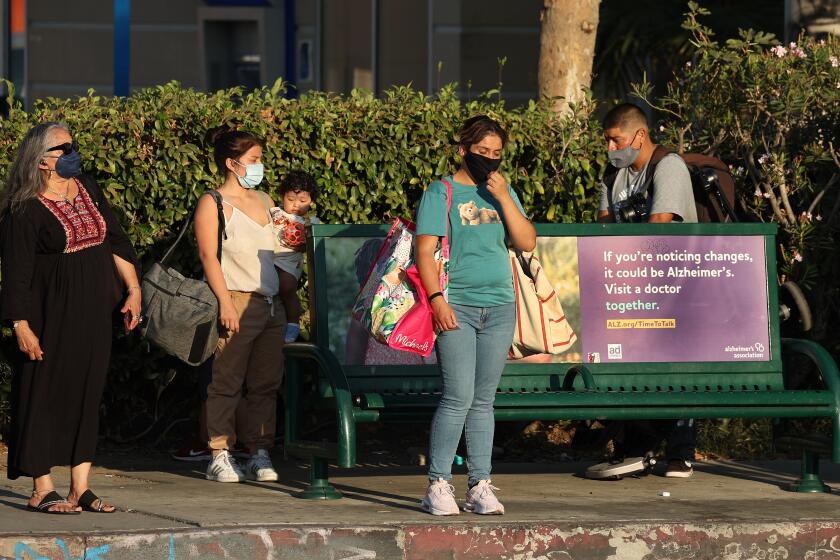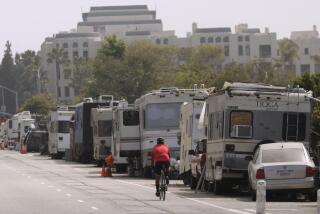Los Angeles promises to add thousands of bus shelters

- Share via
Thousands of bus shelters could be added to Los Angeles streets over the next decade under an advertising contract approved by the City Council this week.
On Tuesday, the council voted 12 to 1 to give the joint venture Tranzito-Vector a 10-year contract to advertise on hundreds of bus shelters in exchange for installing and maintaining 3,000 such structures across the city.
In Los Angeles, fewer than a quarter of its 8,000 bus stops have shelters. The move would markedly increase shade for bus riders forced to wait in the sun as heat waves are predicted to grow more severe and frequent with climate change.
But critics say it opens the door to more digital advertising, which neighbors see as an eyesore, and to dependence on funding from that advertising, which could be elusive.
The company promises to upgrade the experience for bus riders with real-time transit data, more shade and cover from the rain, and has plans for possible scooter and bike docks. The aim is to provide shade for at least 75% of transit users, with the locations largely determined by city planners based on the area’s heat index, transit usage and economic needs.
“This is a big step forward for the city of Los Angeles in creating a transportation system that serves our most disadvantaged residents,” Councilmember Bob Blumenfield said before the vote.
Under the terms of the contract, Los Angeles pays $237 million to build the bus shelters, but earns 60% of all ad revenue from them — projected to be $639 million over the life of the contract. The city hopes the contract will pay for itself, but this will be contingent on a turbulent advertising market, raising concerns among some councilmembers.
“I can’t obligate ourselves to what I think is a contract that is already for me showing signs of some unfulfilled promises,” said Councilwoman Monica Rodriguez, the lone dissenting vote.
Thousands of Metro bus stops have no shelter or even a seat. But a proposal to bring new shelters to Los Angeles with digital ads is raising doubts.
So far the city has identified more than $36 million in available funds. Of that, $30 million would come from a city trust fund that would need to be paid back. Officials are seeking more funding from state and federal grants.
The shelters are set to be installed over a five-year period, at a pace of about 600 a year and would feature e-paper screens with real-time bus information. About 700 would have digital advertising screens.
Some communities oppose the displays.
“This is contrary to public safety, as digital signs are known to increase traffic accidents,” said Marian Dodge, chair of the Federation of Hillside and Canyon Assns. “Billboards lower the property values of nearby homes.”
But for those who use the bus, like advocate Lillibeth Navarro, it’s a simple compromise.
“What is there that poses a problem for bus stops? The abuse of advertising? That is not as significant as the benefits of bus [shelters],” said Navarro, founder of Communities Actively Living Independent & Free. Those with disabilities often rely on them to get around.
“Bus stops are a very useful and practical city service,” Navarro said. “Let’s make them better, cleaner, more ergonomic and functional, less prone to vandalism, more accessible.”
More to Read
Sign up for Essential California
The most important California stories and recommendations in your inbox every morning.
You may occasionally receive promotional content from the Los Angeles Times.












